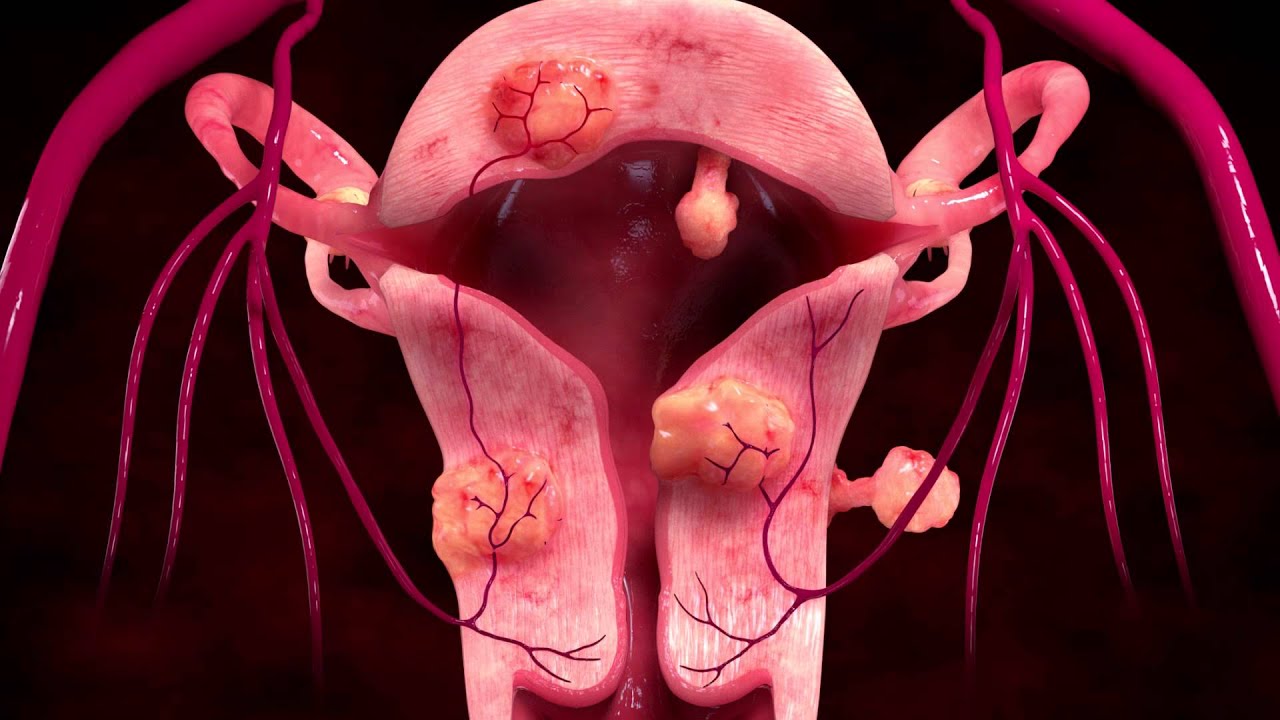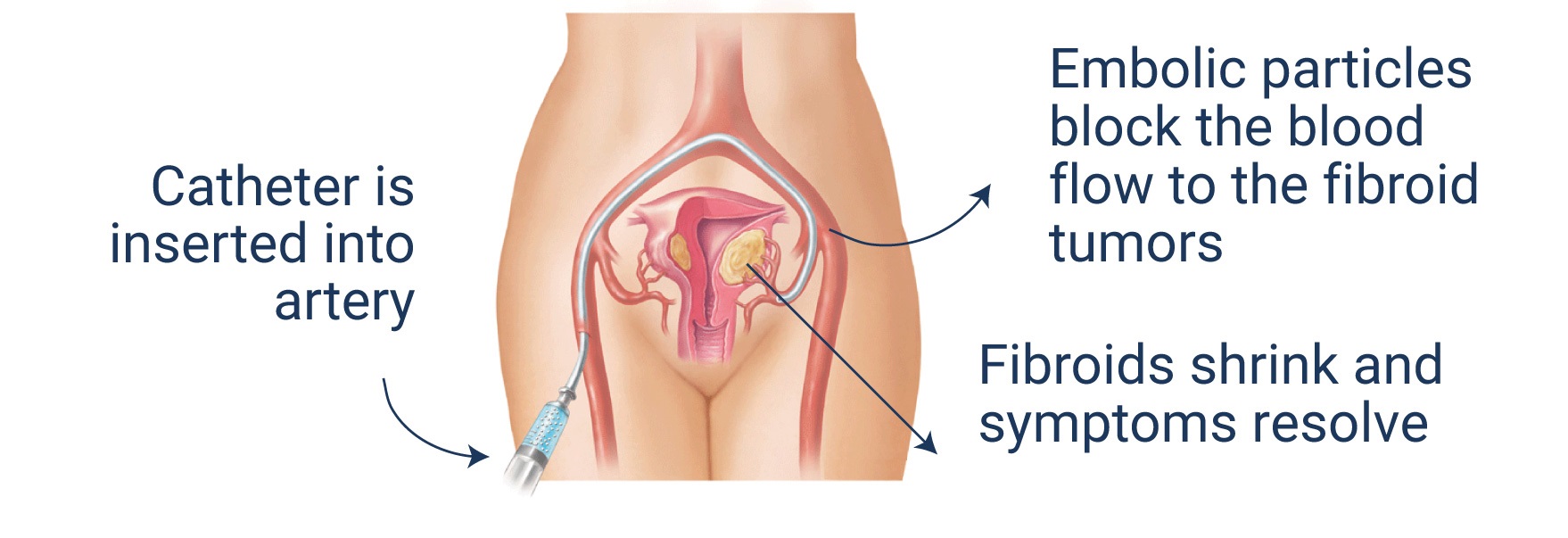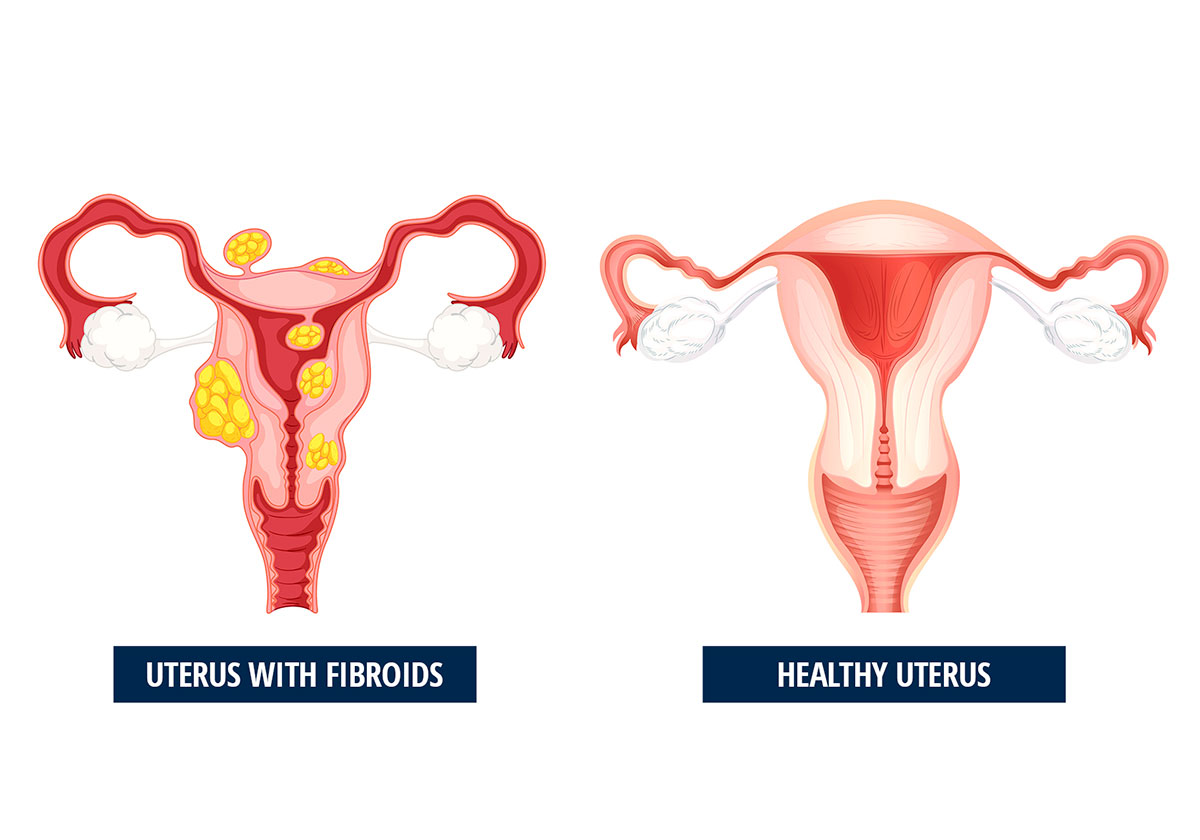Uterine Artery Embolization Procedure
27
Jan
2022
What is Uterine Artery Embolization?
Uterine artery embolization (UAE) is a minimally invasive treatment used to stop severe pelvic bleeding. The cause of such bleeding can be uterine fibroids (noncancerous tumors within the uterus), trauma, malignant (cancerous) gynecological tumors, or hemorrhage following childbirth, among other conditions.
The terms uterine artery embolization and uterine fibroid embolization (UFE) are usually mistakenly used to mean the same thing. To be exact, UFE is a particular type of uterine artery embolization. As noted above, UAE could treat a number of conditions other than fibroids that cause pelvic bleeding.

How does uterine artery embolization work?
In UAE, blocking agents are introduced into specific blood vessels. These agents are guided to the uterine arteries through a tube (catheter) with the use of fluoroscopy, a form of X-ray that captures moving pictures. When blood vessels are blocked, bleeding could be brought under control, and tumors or fibroids could be made to shrink by cutting their blood supply. Surrounding healthy tissue is not damaged because it continues to be fed by other unblocked vessels.
Who needs to have uterine artery embolization?
Women who experience heavy pelvic bleeding as a result of fibroids or other conditions might benefit from UAE.
Uterine fibroid embolization (UFE) should not be done:
- When the patient has uterine fibroids but no symptoms
- If the woman is pregnant
- If cancer might be present
- In cases of pelvic infection
- In cases of allergic reaction to contrast dyes

How common are uterine artery embolizations?
About 25,000 UAE procedures are done around the world each year.
What happens before a uterine artery embolization?
- A general overview of the patient’s health, allergies (such as anesthetics or administered dyes), medications, menstrual history, current pregnancy, and desire for future pregnancy will be determined.
- Magnetic resonance imaging (MRI), laparoscopy, or ultrasound will provide pictures of the interior structure of the uterus, helping to determine the source of symptoms.
- A biopsy (tissue sampling) of the inner lining of the uterus might be taken to determine if cancer is present.
- Use of aspirin, non-steroidal anti-inflammatory drugs, or blood thinners is discontinued sometime prior to UAE.
- No eating or drinking is allowed prior to the procedure. The doctor will let you know the length of this fasting period.

How is a uterine artery embolization (UAE) done?
- A UAE is done in a catheterization laboratory or operating room by an interventional radiologist.
- The patient lies down on an examining table and is hooked up to machines that will monitor vital signs like heart rate, blood pressure, and breathing.
- An IV (intravenous) line will inject an anesthetic (pain blocker) and sedative.
- A tiny incision is made in the groin. An X-ray camera (fluoroscope) and contrast dyes are used to direct the insertion and positioning of a catheter.
- The catheter delivers particles known as embolic agents (like polyvinyl alcohol) that will halt the flow of blood in certain uterine arteries.
- Upon completion, the catheter is removed. Any bleeding from the incision is controlled, and a dressing is applied. Stitches are not required.
- The whole procedure generally takes about ninety minutes.
- Pain medications might be given as the patient rests in the hospital overnight for observation.
What happens after a uterine artery embolization?
- Most patients go home the day after the procedure.
- Prescriptions for pain and other medicines are given for use at home. Normal activities might resume within one to two weeks after the procedure.
- Menstrual bleeding might not resume for a cycle or two. When it does resume, the amount of blood might be less than normal but will slowly increase in the next cycles to a level that shows improvement from pre-procedure levels.
- In the case of treatment for fibroids, symptoms should start to disappear in about two to three weeks. By six months the level of improvement reaches its peak and then stabilizes.
What are the advantages of uterine artery embolization?
- Can be done under local anesthesia.
- A short period of recovery.
- Little blood loss or bleeding afterward.
- Avoids the side effects of hormone therapies that are occasionally used to treat fibroids.
- Needs only a small incision, making it less invasive than other treatments like a myomectomy (surgical removal of uterine fibroids) or hysterectomy (removal of the entire uterus).
- Nearly ninety percent of women treated with UAE for fibroids experience partial or full relief of symptoms.

What are the risks of uterine artery embolization?
- Insertion of the catheter can damage other blood vessels in the area, or cause an infection. The risk of this happening is less than one percent when UAE is done by an experienced practitioner.
- The embolic agent can be deposited in an unintended blood vessel, choking off blood supply to healthy tissue.
- An allergic reaction to X-ray contrast dyes can happen.
- In about one percent to five percent of women, menstrual cycles will shut down permanently following uterine fibroid embolization (UFE). This generally happens in women over the age of 45.
- The younger a woman is at the time of UFE, the greater the chances that symptoms can return and a hysterectomy may ultimately be required.
Is a uterine artery embolization safe?
- There is still some question on whether uterine fibroid embolization (UFE) lowers future chances of pregnancy. Some doctors prefer to have the fibroids surgically removed if the woman wants to have more children.
- Pregnancies after UAE could have higher rates of miscarriage and are more likely to have a cesarean section and postpartum hemorrhage.

What is the long-term outlook for patients?
- Studies on patients who had uterine artery embolization (UAE) show control of bleeding symptoms in ninety percent to ninety-two percent of patients after twelve months.
- For treatment of fibroids, patients who received uterine fibroid embolization (UFE) showed the same levels of satisfaction at both the one and five-year marks as patients who had a surgical treatment.
How long is the healing process?
Ninety percent of patients resume normal activity within ten days. In comparison, recovery from a hysterectomy could take up to six weeks.
How frequently should I have a uterine artery embolization?
Studies have shown patients receiving uterine fibroid embolization (UFE) had a thirteen percent rate of repeat procedure after twelve months and a thirty-two percent rate at five years. Over the long term, any procedure that leaves the uterus in place will result in a return of fibroids. The second round of UFE could be administered, with results on par with those of the first.
When should I call my healthcare provider?
Pelvic cramps are a possible side effect for some days following uterine artery embolization (UAE), most particularly in the first twenty-four hours. Fatigue, mild nausea, and low-grade fever are possible as well. Up to ten percent of patients are readmitted to the hospital because of such symptoms. Severe or long-lasting discomfort following UAE should be communicated to your doctor.
Hill Regional (HRH) Hospital is here to assist all your medical needs with specialists and surgeons trained and experienced in the most advanced treatments. Our highly qualified doctors, nurses, and administrators are dedicated to caring for you with compassion in our state-of-the-art facilities.
Call us on 254-580-8500 to book an appointment with our specialist doctors.